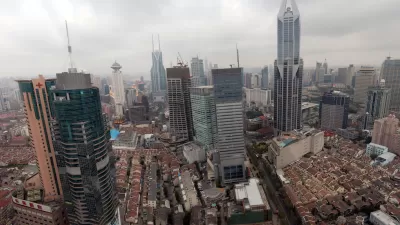Since 2006, agro-businesses, hedge-funds, financial firms, and government agencies have splurged on an overseas land-buying binge. As Saskia Sassen explains, such purchases disrupt the status quo, forcing local residents to migrate to cities.
"The sharp change in the post-2006 level of acquisitions concerns me," says Sassen. "It points to a specific structural transformation in an old practice: the massive expulsion of small farms, rural factories and whole villages from land they may have held or occupied for many generations."
"When a foreign government acquires 2.8m hectares of land in Congo and another such tract in Zambia to grow palm for biofuels, it expels faunas and floras, and all other uses of that land. It creates a tabula rasa, where once there were smallholder economies generating livelihoods for local people," she explains. "In all these diverse situations, survival has become a major challenge for local residents, even for the relatively small proportion able to get a job in the plantations and mines."
"Migrating to the cities is one major option," she observes. "When politicians drone on mindlessly about more than half the world's population becoming urbanised, they rarely bring up the diverse ways in which people are being pushed off their land. Where else can they go but cities?"
"The generic term 'migration' tends to obscure the fact that our firms and government agencies, and those of our allies, may have contributed to expulsions."
FULL STORY: Migration is expulsion by another name in world of foreign land deals

Maui's Vacation Rental Debate Turns Ugly
Verbal attacks, misinformation campaigns and fistfights plague a high-stakes debate to convert thousands of vacation rentals into long-term housing.

Planetizen Federal Action Tracker
A weekly monitor of how Trump’s orders and actions are impacting planners and planning in America.

San Francisco Suspends Traffic Calming Amidst Record Deaths
Citing “a challenging fiscal landscape,” the city will cease the program on the heels of 42 traffic deaths, including 24 pedestrians.

Defunct Pittsburgh Power Plant to Become Residential Tower
A decommissioned steam heat plant will be redeveloped into almost 100 affordable housing units.

Trump Prompts Restructuring of Transportation Research Board in “Unprecedented Overreach”
The TRB has eliminated more than half of its committees including those focused on climate, equity, and cities.

Amtrak Rolls Out New Orleans to Alabama “Mardi Gras” Train
The new service will operate morning and evening departures between Mobile and New Orleans.
Urban Design for Planners 1: Software Tools
This six-course series explores essential urban design concepts using open source software and equips planners with the tools they need to participate fully in the urban design process.
Planning for Universal Design
Learn the tools for implementing Universal Design in planning regulations.
Heyer Gruel & Associates PA
JM Goldson LLC
Custer County Colorado
City of Camden Redevelopment Agency
City of Astoria
Transportation Research & Education Center (TREC) at Portland State University
Jefferson Parish Government
Camden Redevelopment Agency
City of Claremont



























